Fruit Trees are a Valuable Part of the Landscape
I enjoy ornamental trees as much as any other gardener, but fruit trees add another, often overlooked dimension to your garden: Snacks.
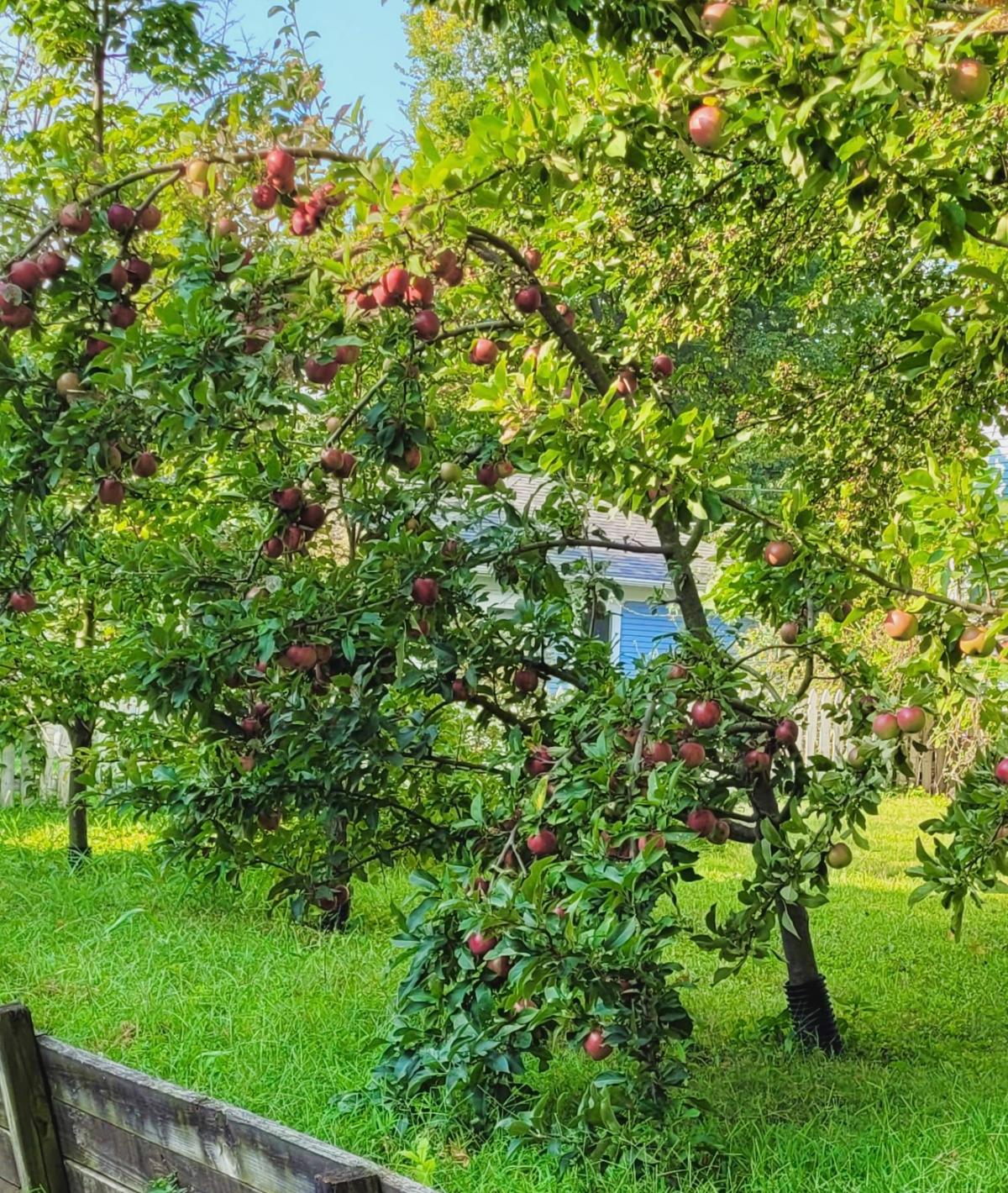
Everybody likes snacks. Fruit trees provide snacks. I consider this a total win.
But if you need more reasons to grow fruit trees in your edible landscape:
- They attract pollinators, which then visit your other crop plants.
- They attract wildlife, which is awesome (for the most part).
- They look gorgeous, and the flowers smell great.
- They’re environmentally friendly!
- Did I already mention snacks?
With dwarf trees, you’re able to plant lots of different fruit trees for a bigger snack selection. That’s what having an edible landscape is about, after all!
Jump to:
- Limited Space? Choose Small Trees.
- Helpful Tips When Choosing Fruit Trees
- Drawbacks with Fruit Trees in the Landscape
- For Best Results, Take Care of Your Fruit Trees
- And Now, Gorgeous Small Fruit Trees for the Edible Landscape
- Serviceberries
- Honeyberry
- Goumi berry
- Asian Pear
- Persimmon
- Citrus Trees in Containers
- Nanking Cherry
Limited Space? Choose Small Trees.
Grow only dwarf or semi-dwarf fruit trees, especially if you’re just starting out and haven’t worked much with fruit trees before or if you have a small yard.
Dwarf and semi-dwarf trees allow you to have a wider variety of fruits in your backyard without being overwhelmed by all of it!
- A dwarf fruit tree grows between 6 to 12 feet tall.
- A semi-dwarf tree grows from 12 to 15 feet tall, though they can get up to 22 feet tall.
- A standard-sized fruit tree will grow 30 feet tall and wide – or more.
A regular pruning every winter will keep these trees within bounds and manageable.
Helpful Tips When Choosing Fruit Trees
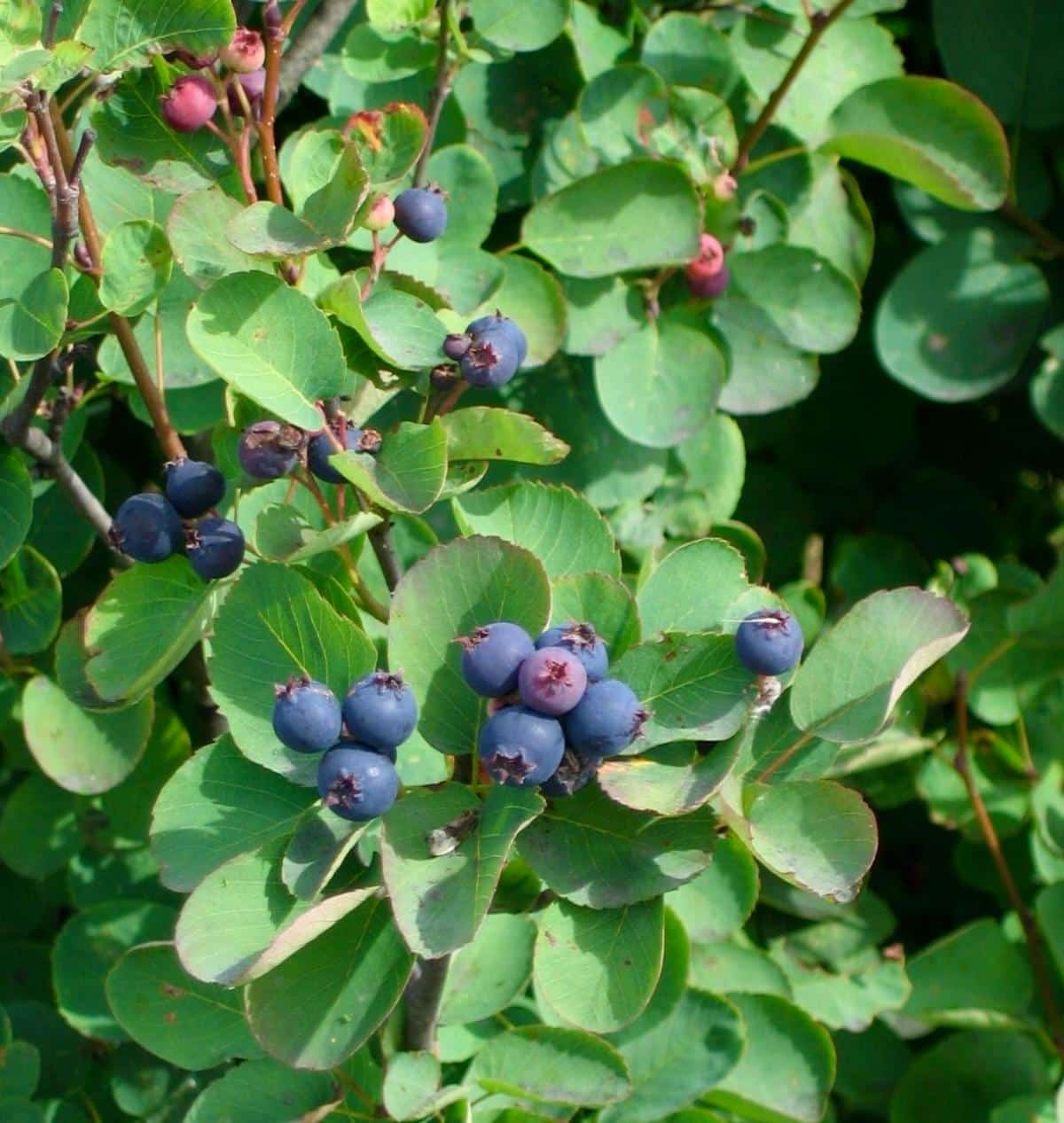
- Choose fruit trees adapted to your climate. Don’t plant guava in your yard, and expect it to live through the winter if you live in zone 4.
- Fruit trees that require a large number of chilling hours – that is, the number of hours when the temperatures are between 32 and 45 degrees – might do poorly in hotter climates. However, there are workarounds for fruit growers in warm climates, which include using different rootstocks or choosing fruits that require only 100-200 chill hours.
- Learn what trees work best in your area. See what your local retailers sell. Talk to the tree people at locally-owned nurseries.
- Visit local pick-your-own orchards and try out the different fruits they grow. See what the actual fruit trees look like and how they’re pruned. Get to know the folks who work there and talk about the varieties they grow.
- Choose trees that fit in your yard. If you have a small backyard, don’t plant a gigantic pecan tree in the middle of it.
Drawbacks with Fruit Trees in the Landscape
Fruit trees aren’t for everybody, obviously. People literally complain about too much fruit.
- The fruit falls on the grass, and it’s too messy!
- Why must wasps and bees love rotten fruit?
- The squirrel mafia have taken up residence in the persimmon tree and are now eyeing my house!
- Picking up fallen fruit is stealing all my valuable time away from creating an immaculate hellscape of barren grass lawn wherein no creature may live!
- My neighbors have picked all the fruit from my trees and left none for me!
- My other neighbors have been burning up the HOA hotline with complaints because they can’t stand seeing anything natural living in the yard that I own around the house that I own!
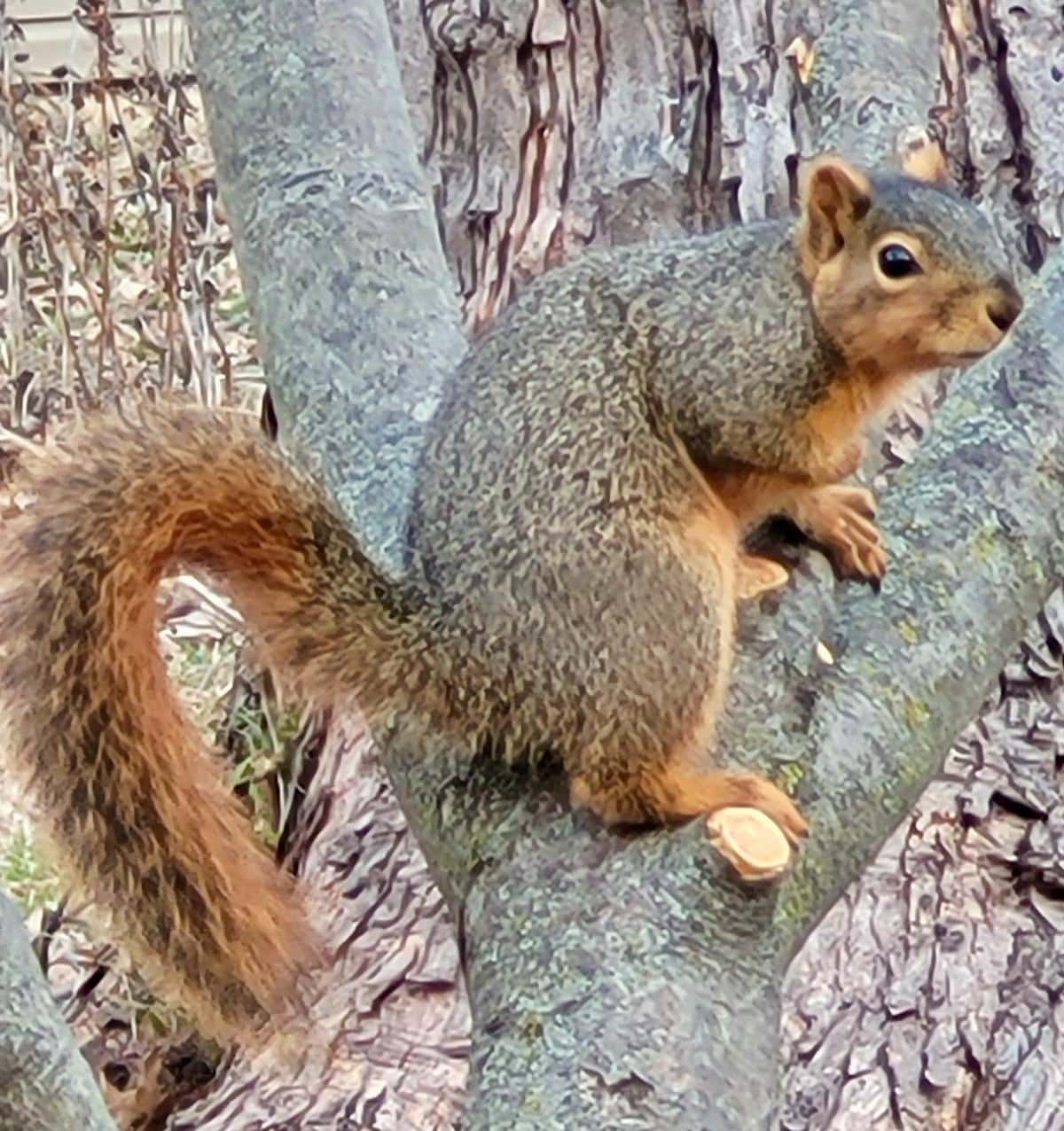
The best way to deal with most of these is to bribe the squirrel mafia with snacks and send them to “take care” of both neighbors. Then, keep fallen fruit picked up.
For Best Results, Take Care of Your Fruit Trees
Fruit trees are not really “plant and forget” trees. They will need maintenance throughout the year. Nothing arduous, though. Thank goodness.
Pruning
Prune fruit trees every winter to improve fruiting, and to keep the tree within bounds. Open up the middle of your tree by pruning out crossing branches, as well as dying, diseased, or deformed branches. Cut branches back to keep the fruit closer to the ground.
Keeping the trees trained small does take some work in winter, but it gives the pears more room to grow and more sunlight, and it makes them easier to pick.
A new apple tree will need to be shaped for the first few years. A mature tree that hasn’t been pruned for a while will need more extensive pruning work. Be sure to avoid these common pruning mistakes with your fruit trees.
Spraying
In my own garden, I don’t spray my fruit trees, mainly because some part of me always flounces at the very thought and says, “It takes too much tiiiiiiiiiiiime!” Which is correct. Also, I don’t mind the occasional worm or misshapen fruit – I just cut these parts out or toss them to the chickens.
However, diseases and pathogens in other places can wreck havoc on fruit trees. Spraying dormant oil in winter and early spring cuts back on those diseases. Regularly spraying them with sulfur throughout the year protects fruit trees against fungal diseases, such as those black blotches on apples.
Iowa State University has a good fact sheet about a Spray Schedule for Home Apple Trees for further reference.
Sanitation
Good care and management of fruit trees also involves keeping the area around them tidy.
In spring, lay wide circle of cardboard around the tree’s dripline, then cover it with mulch. This holds water in the soil, keeps tree roots cool, and stops weeds.
In the fall, pick up rotten fruit so it doesn’t attract wasps. If you’ve got a lot of rotten fruit, dig a composting pit nearby and drop old fruit in there, covering it up daily with soil and fallen leaves. (Lay a sturdy cover over it so people don’t fall in.)
Plant trees away from the sidewalk and street so people and motorcycles don’t slip or skid on squishy fruit.
- Learn more: 14 Basic Steps to Rejuvenate and Prune an Apple Tree
- Learn more: How to Prune New Apple Trees for Best Fruiting
And Now, Gorgeous Small Fruit Trees for the Edible Landscape
Serviceberries
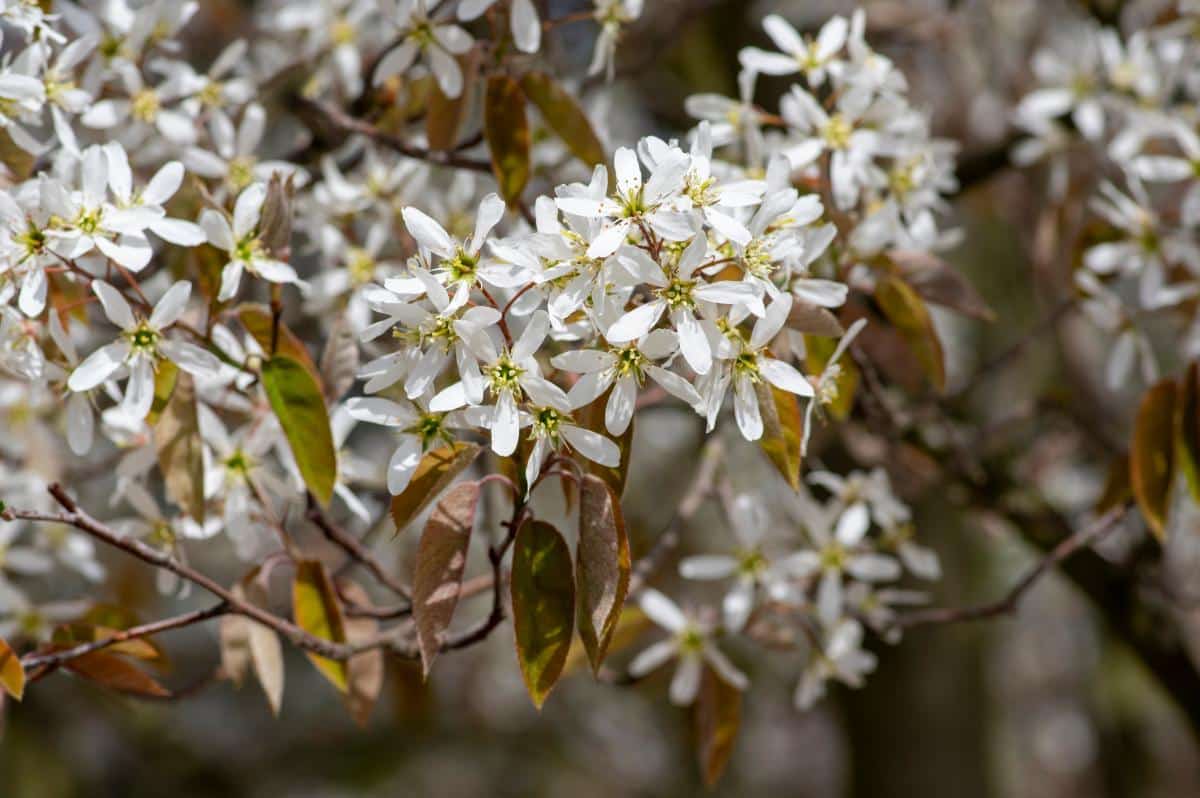
| Scientific name: | Amelanchier spp. |
| Common names: | Juneberry, Saskatoon, Shadblow, Shadbush, Chuckley Pear, Snowy Mespilus, Sugarplum |
| Form: | Shrub or small tree |
| Size: | 8 to 25’, depending on species/variety |
| Sun or shade: | Full sun |
| Hardiness: | Zones 3 to 9 |
Serviceberries come in a wide variety of species and varieties, so there’s really something for everybody here. Grown as shrubs or trees, serviceberries are beautiful with frothy white flowers in spring and graceful limbs, and the fruits look like red and purple blueberries. Some serviceberries turn a gorgeous golden yellow or orange in fall.
Harvest the berries when they’re a dark purple-blue, and they’ll be sweet, plump, and juicy. They’re packed with nutrients, antioxidants, vitamin C, fiber, iron, and protein.
Fruit is plentiful, so there will be plenty to share with the birds (hopefully). Rows of serviceberries grew at the university where I got my master’s degree, and I’d gather the fruit when going from one workshop to another. Young robins were always hiding out in those bushes where berries were plentiful, and enemies were few.
The named varieties below have larger, sweeter berries than the species. Not everybody is crazy about serviceberries, but if you find that the taste doesn’t appeal to you, the birds will definitely be happy to take care of those berries!
Varieties Worth Enjoying
‘Smokey’ bears white blossoms, blue berries, yellow fall color. These get about 10 to 25 feet tall and are great ornamental shrubs. Their berries are considered to be some of the best-tasting among the serviceberries.
‘Princess Diana’ has lovely white blossoms, a fruit that tastes like a delicious blueberry, and an intense orange-red fall color.
‘Regent’ grows only 4 to 6 feet tall, bears extra sweet fruit, is hardy to zone 2 and turns golden in fall.
‘Autumn Brilliance’ George Washington grew this at Mount Vernon, and this tree still provides a spectacular show in fall.
‘Northline’ gets only 6 to 7 feet tall, so grow it as a shrub. Early bearing, productive, and tasty with larger berries.
Honeyberry
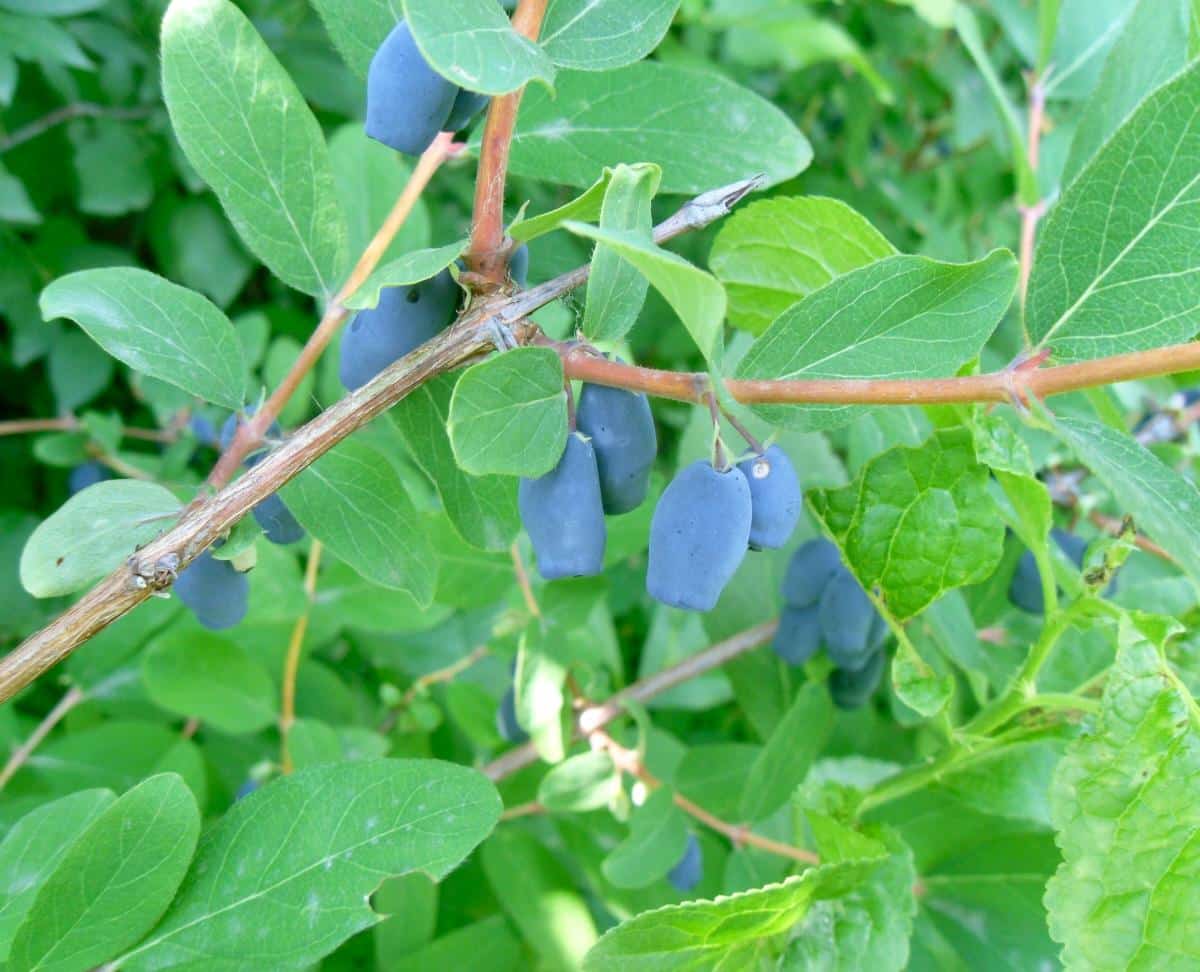
| Scientific name: | Lonicera edulis, L. caerulea |
| Common names: | Haskaps |
| Form: | Large mounding bushes |
| Size: | 2 to 6’ tall and wide |
| Sun or shade: | Full sun, partial sun in hotter climates |
| Hardiness: | Zones 2 to 8 |
I was pleasantly surprised to see these small blue berries, similar in size to blueberries, hanging on a honeysuckle plant. I was familiar only with the red-berried varieties that were so common in my area, that were beloved by cedar waxwings in fall and winter.
These berries, which are similar in flavor to blueberries or blackberries, also pack a good nutritional punch. They contain Vitamin C and bioactive flavonoids.
Honeyberry bears trumpet-shaped flowers in spring, then bears blue, teardrop-shaped fruits in late spring to early summer. Wait until the inner flesh of the berry turns purplish before eating. The berry turns blue before it’s fully ripe, and they need a little extra time to sweeten up.
Plant two varieties for the best cross-pollination.
Goumi berry
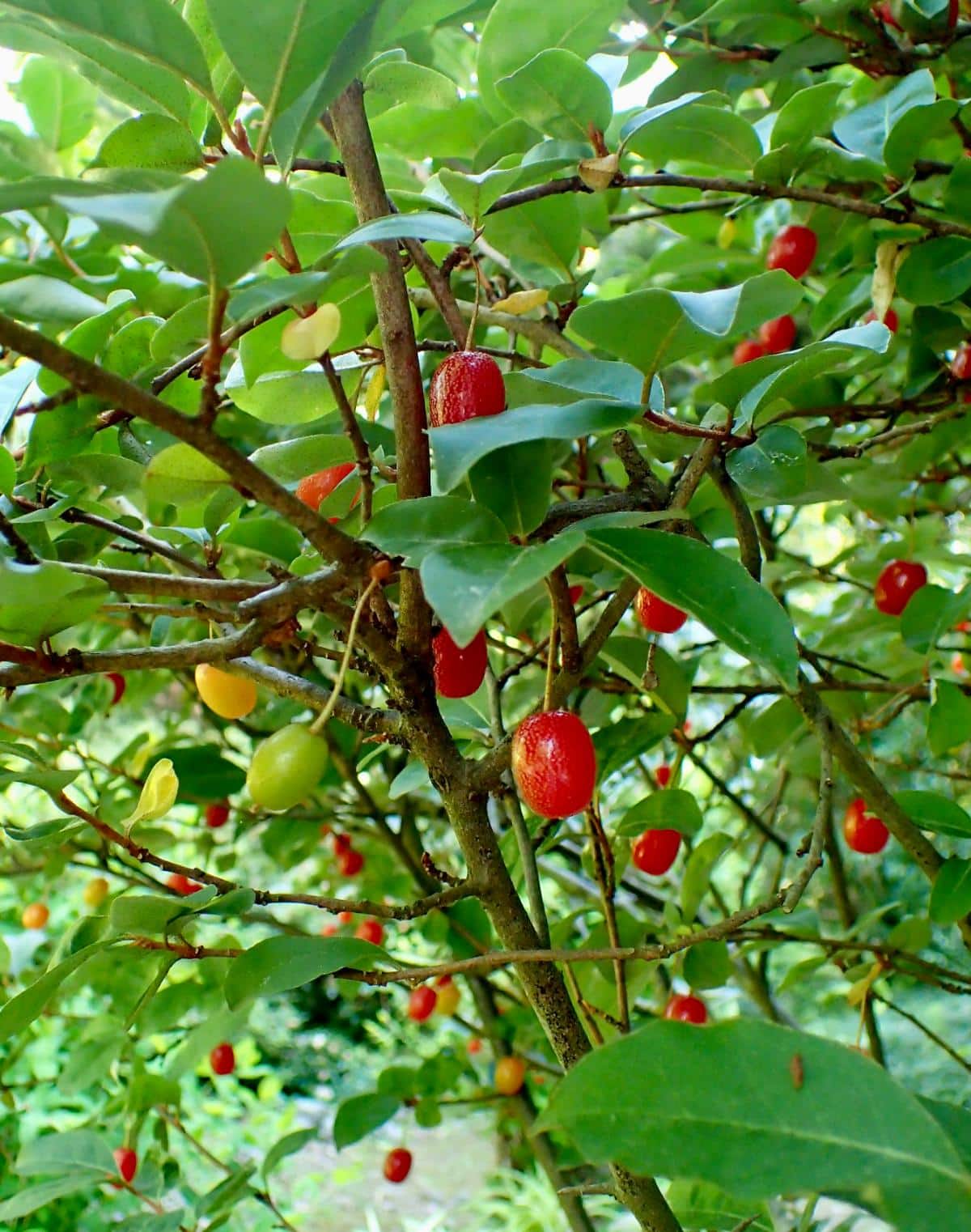
| Scientific name: | Elaeagnus multiflora |
| Common names: | Cherry Silverberry, Cherry Elaeagnus, Cibie, Longpipe Bush, Daio-Gumi |
| Form: | Shrub, Tree |
| Size: | 6 to 8’ tall and wide |
| Sun or shade: | Full sun, part shade |
| Hardiness: | Zones 4 to 9 |
The goumi is in the same genus as Autumn Olive and Russian Olive, but the goumi shrub is less invasive and has the juiciest, largest fruits.
Goumi berries look like little cherries. Wait until they’re fully ripe, bright red, and soft before you pick the berries so you get the sweetest flavor. Don’t pick them too soon because they’ll make you pucker! Their flavor, when ripe, is similar to rhubarb, sweet and slightly astringent.
Goumi plants fix nitrogen into the soil so they will prosper in poor soils while improving the soil. They’re great companions for fruit trees for that reason.
The white spring blooms are small, but their fragrance travels a long way. Silvery leaves also add to their beauty.
Read more: 12 Best Ornamental Food Plants for Edible Gardens
Asian Pear
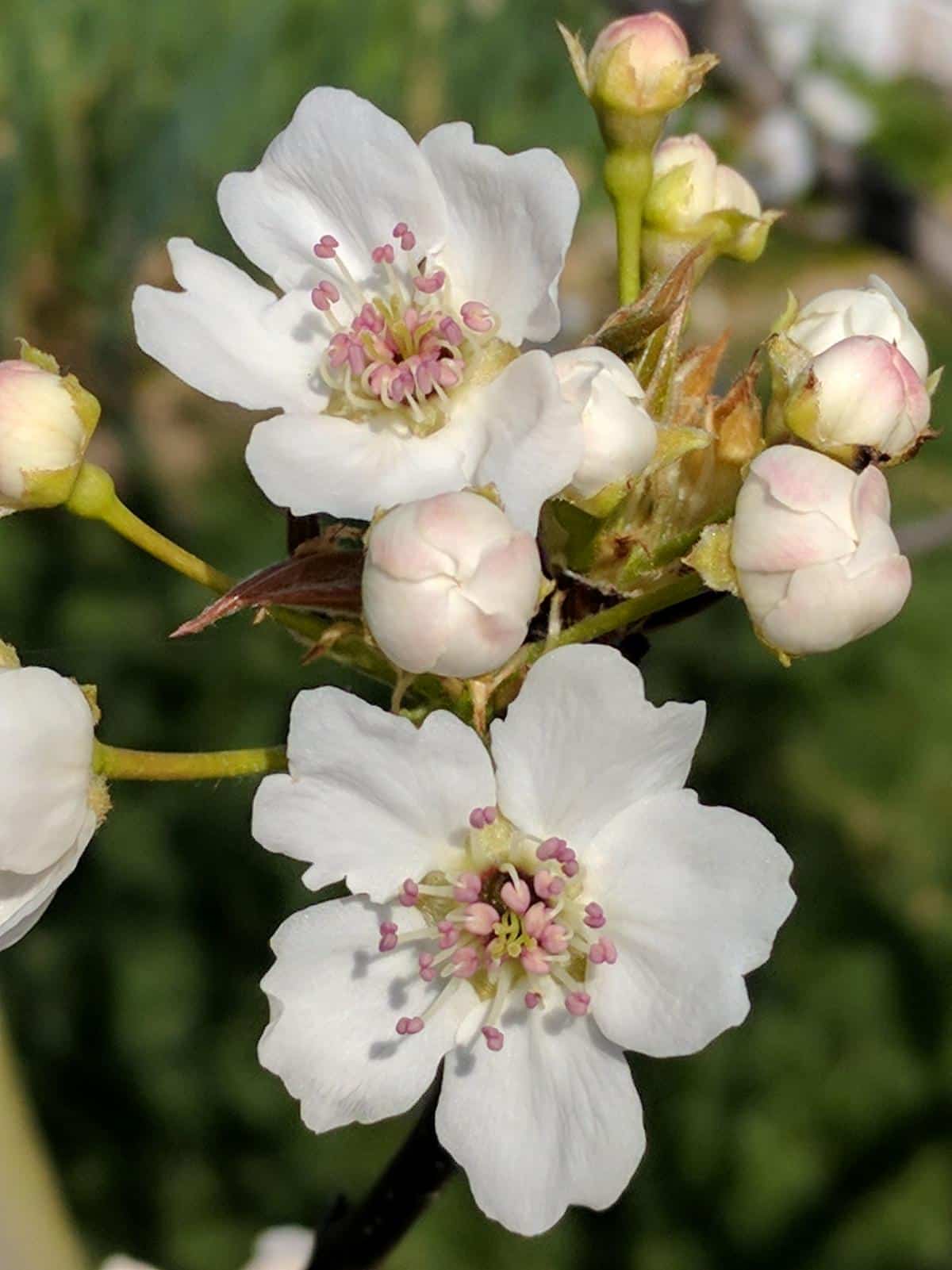
| Scientific name: | Pyrus pyrifolia |
| Common names: | Nashi pear, apple pear, zodiac pear, naspati, sand pear |
| Form: | Tree |
| Size: | Standard 20’ – Semi-dwarf 12-15’ – Dwarf 8 to 10’ |
| Sun or shade: | Full sun |
| Hardiness: | Zones 5 to 10 |
Once eaten only by the wealthy, these apple-shaped pears are now widely available, and there are thousands of different pear tree cultivars that can be grown.
Asian pears are crispy, sweet, and fragrant and great for eating out of hand, especially when picked fresh off the tree. They’ll keep in the fridge for over a month.
In spring, Asian pear trees are among the first to bloom, and they’ll put on a big production of white blossoms. In fall, their fruit and then their leaves turn a brilliant gold.
Asian pears tend to set too much fruit, so when the fruits get about the size of a golf ball, thin them out, spacing the fruits on the branches about four or five inches apart. Pick off the smallest, misshapen, and any bug-eaten fruits. There will still be plenty left for harvest!
In Korea, trees are trained to join together to create arches. This makes the pears easier to reach from the ground. Growers say that this method makes it easier to manage the trees than letting them grow naturally.
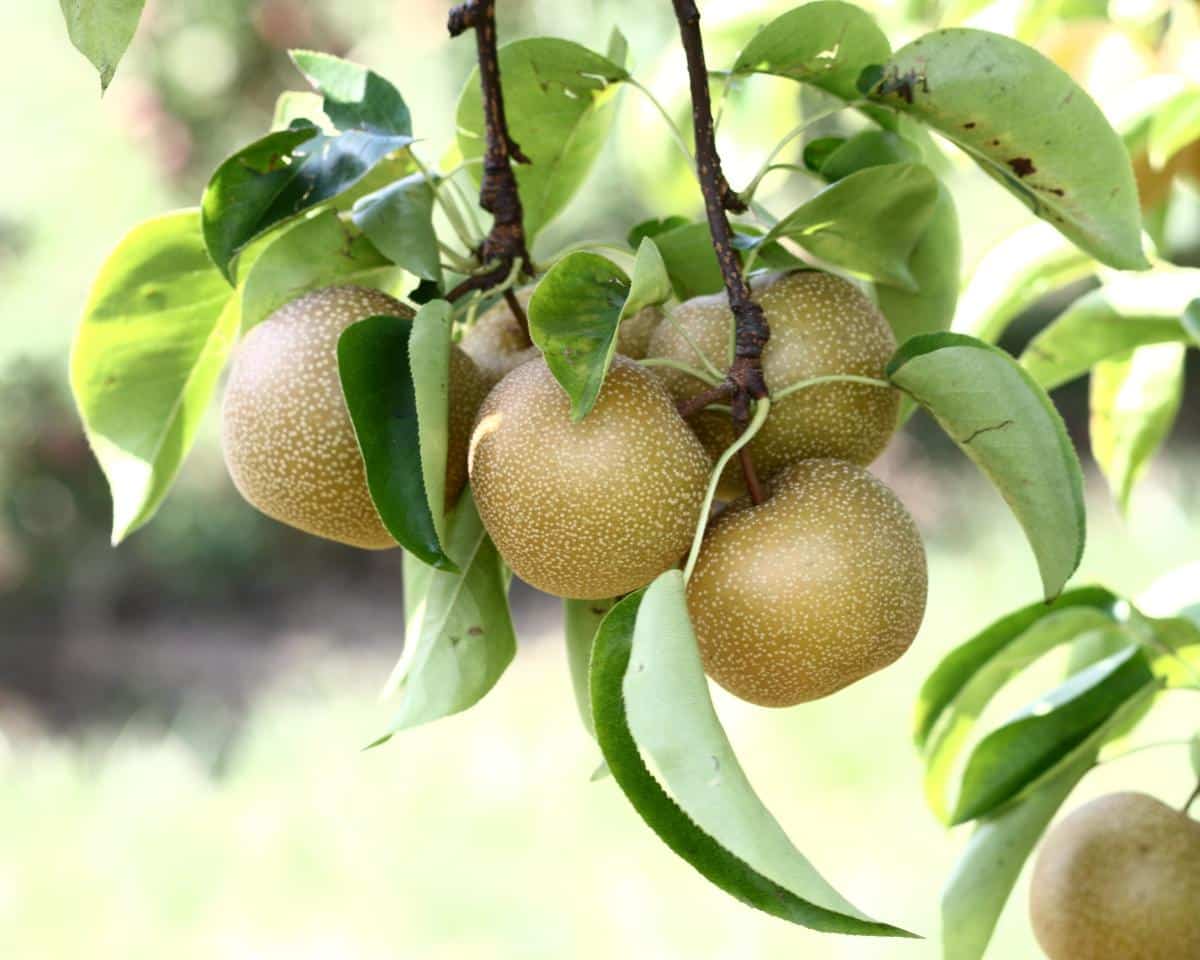
‘Hosui’ tastes really good, bears a lot of fruit, and the tree takes only 3 to 4 years to get big enough to produce – though a dwarf tree might produce more quickly.
‘Shenseiki’ has a bright yellow skin and is self-fertile so you don’t need to buy a second tree. (It still helps to have a second Asian pear nearby.)
‘Chojuro’ is butterscotch candy flavored and can stay in storage for five months. A heavy producer that will provide bushels of fruits.
‘Olympic’ is large, brown-skinned, and sweet. This pear can be stored for up to six months.
Learn more: 12 Low-Maintenance Fruit Trees Anyone Can Grow
Persimmon

| Scientific name: | Diospyros spp. |
| Common names: | Possum apples, sugar plums, kaki, Sharon fruit |
| Form: | Tree |
| Size: | 8 to 10’ (for a dwarf tree) |
| Sun or shade: | Full sun |
| Hardiness: | Zones 6 to 11 (depending on variety) |
Persimmon trees have a graceful, layered form that is lovely to behold. The blossoms are small, but the trees have great fall color. The leaves are brushed with vivid shades of red, yellow, and orange, followed by big orange persimmons like bright lanterns after leaf fall.
Persimmons are tasty fruits if you eat them at the right time!
There are two categories of persimmons: astringent (which need to become extremely ripe and soft before being eaten) and non-astringent varieties (which can be eaten any old time after it’s ripened). I always pick persimmons at the wrong time, and the astringent fruit turns my mouth inside out.
Grow persimmon trees in sandy loam soil with a pH on the slightly acidic side. If you don’t have sandy loam, they still appreciate good drainage. Dig a deep hole to plant persimmons so their taproot can get a good start. Persimmon trees will take several years to get established, so do your best to be patient.
‘Fuyu’ bears crunchy, sweet fruits into early winter that you can eat and enjoy!
Citrus Trees in Containers
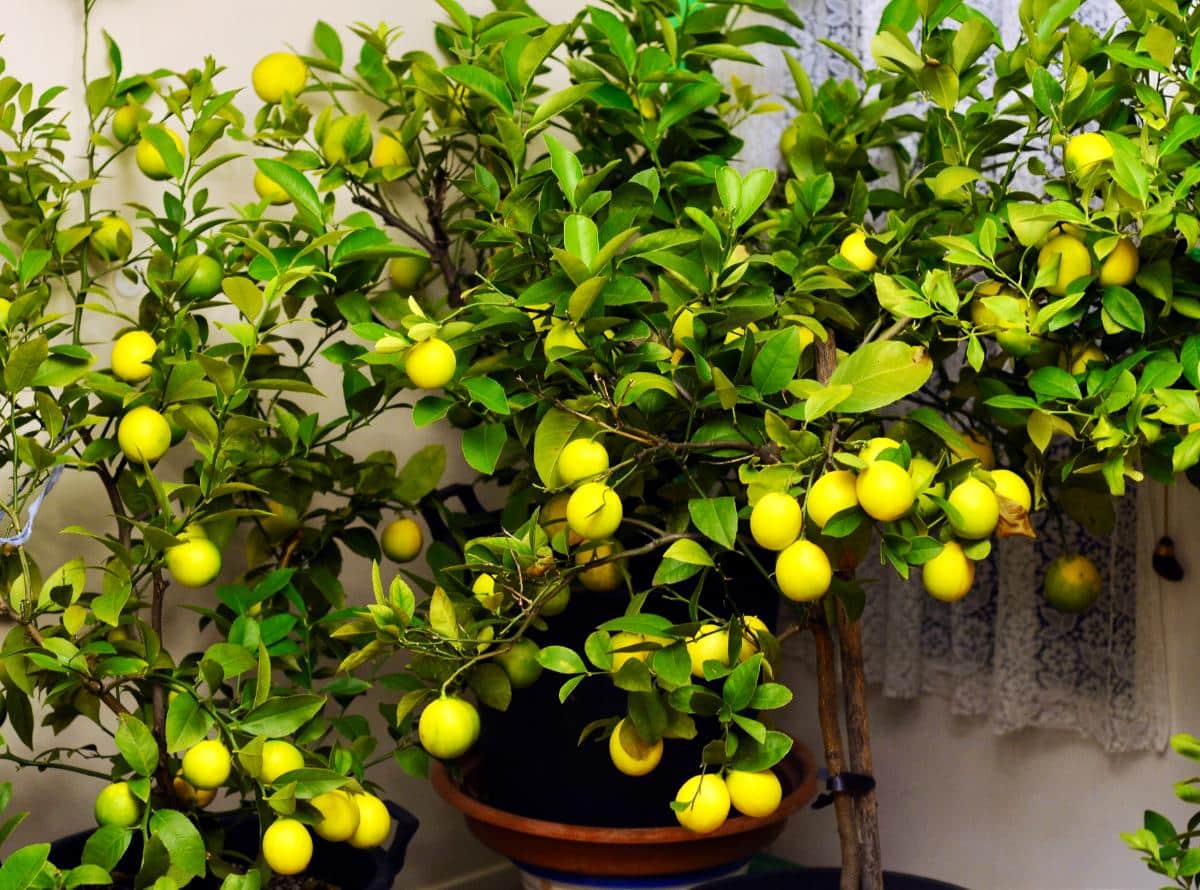
| Form: | Tree or shrub |
| Size: | 6 to 12’ outdoors; 2-3’ in containers |
| Sun or shade: | Full sun |
| Hardiness: | Zones 8 to 11, depending on variety |
Dwarf citrus trees grown in pots add a cultured look to the edible landscape while providing fragrant blossoms and delicious fruit. Oranges, lemons, Mexican limes, kumquats, calamondins, tangerines, limequats, or any other member of the far-ranging citrus family look good if grown in large containers.
Be sure to select a tree grown on dwarf rootstock, such as Flying Dragon rootstock, which will be half the size of the citrus tree. That means that a tree that ordinarily grows 10’ tall would grow only 5’ on this rootstock.
A terra-cotta pot is best for citrus because it’s porous and will allow air to get to the roots. Choose a larger pot for larger trees, like a half-whiskey barrel.
Learn more: 12 Best Mini Fruit Trees to Grow Indoors
- Citrus trees seem to produce best when they’re slightly potbound. Think of a cat getting inside a box that’s too small for it. The cat looks squished, but she’s sitting in that tiny thing with her eyes shut and she is perfectly content. So it is with a citrus tree in a container.
- It’s important to keep an eye on the form of the citrus tree. Don’t go overboard with pruning, but pay attention to the essentials. If the citrus tree grows on a single trunk, rub out or clip off any new sprigs that try to grow out of the trunk, or the tree will turn into a shrub.
- When a rogue branch tries to grow longer than the rest of the plant, trim it off. These growths will try and turn into a new leader.
- Next year’s flower will form on last summer’s growth, so don’t prune until all the fruit is picked. Even then, keep pruning to a minimum. Focus on removing dead, deformed, and diseased branches.
Nanking Cherry
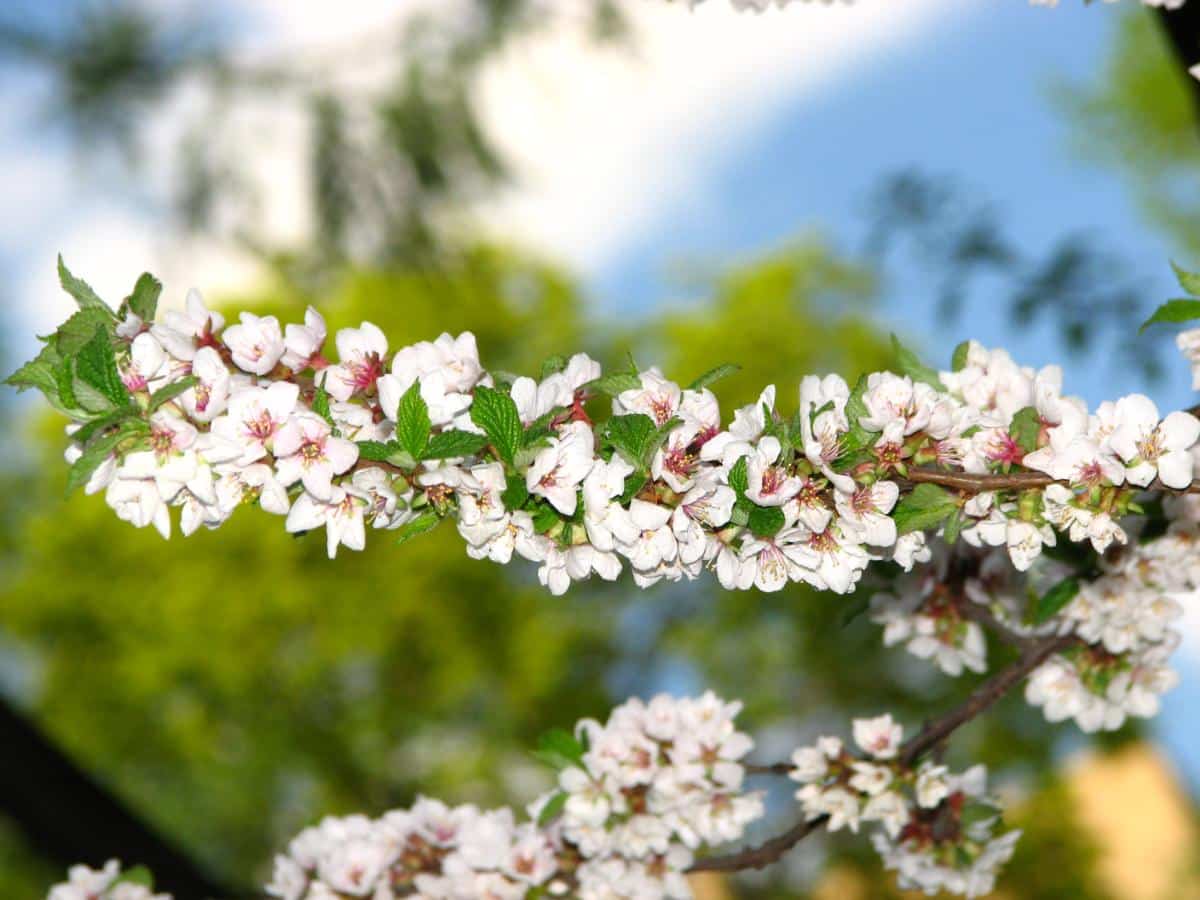
| Scientific name: | Prunus tomentosa |
| Common names: | Manchu cherry, downy cherry, mountain cherry, Mongolian cherry, Chinese bush cherry |
| Form: | Shrub or small multistemmed tree |
| Size: | 10 to 12’ tall and wide |
| Sun or shade: | Full sun |
| Hardiness: | Zones 4 to 8 |
An early spring bloomer, the Nanking cherry starts with fragrant, light pink blooms that look like cotton candy, then turn white as they age.
They’ll need cross pollination for fruit production, so get more than one Nanking cherry, or grow it near an early flowering plum such as Brookgold, Bounty, or Dandy. (You can get a crop from a lone tree, but cross pollination results in more and tastier fruit.)
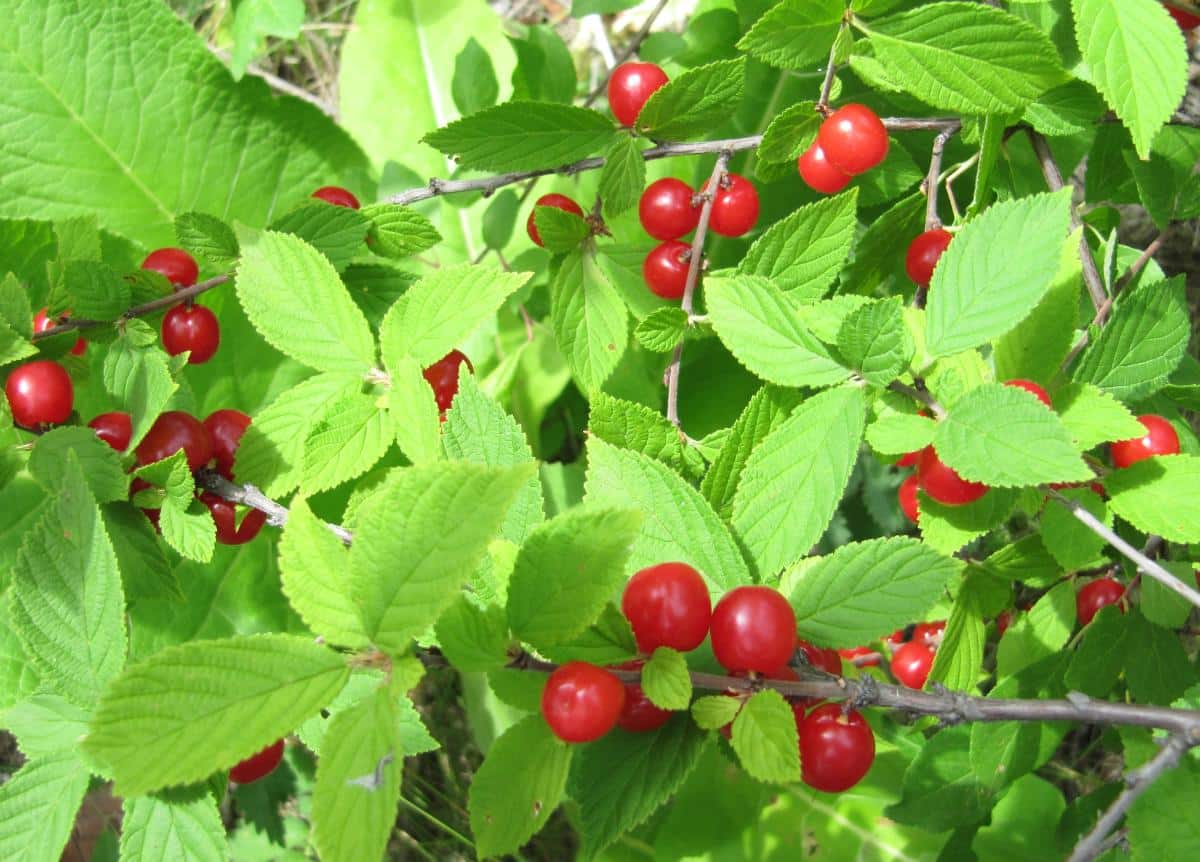
Brilliant red berries ripen from early to late summer, ranging from sweet to tart. They are great for jams and pies. Nanking cherries will set fruit later than other fruits, so they’re mostly unaffected by spring freezes.
The shiny, reddish bark on the Nanking cherry naturally exfoliates, adding interest to the winter landscape. This shrub can be used as an edible hedge or windbreak.
Nanking cherry is also great for wildlife. It’s vigorous and easy to grow.
Varieties of note:
‘Gabe,’ ‘Jules,’ and ‘Ian’ bear white berries. ‘Ian’ is allegedly the sweetest of the Nanking cherries.
More Edible Garden:


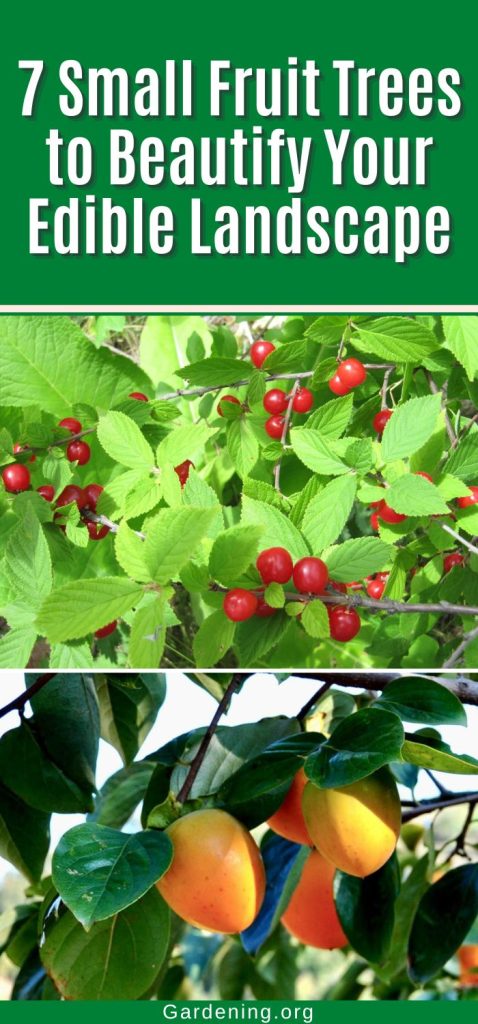

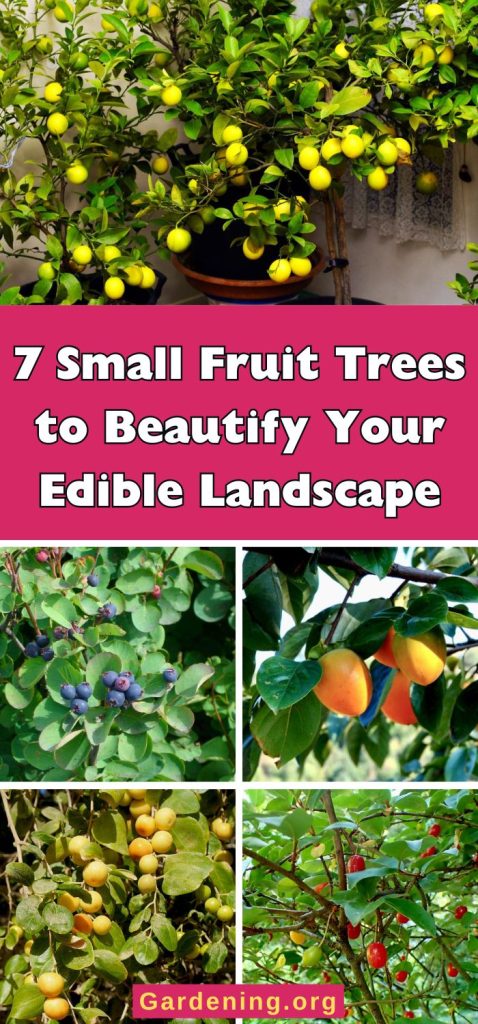
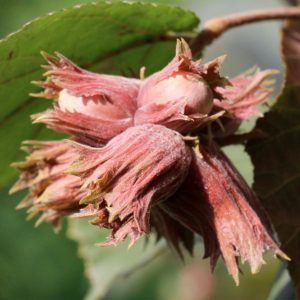
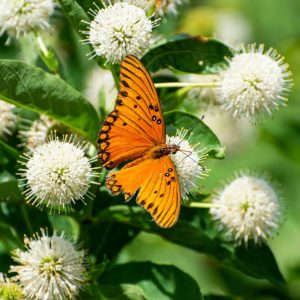
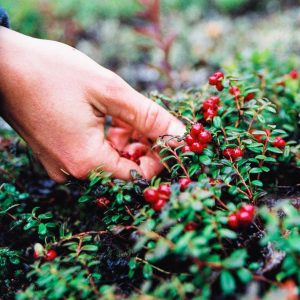
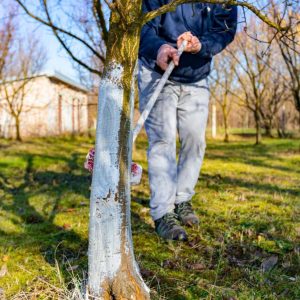
Leave a Reply